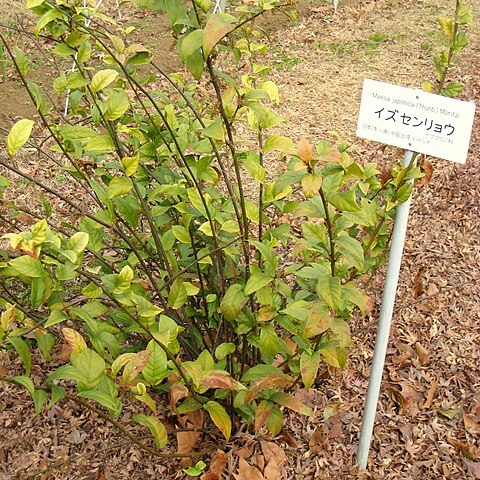Scandent shrubs or small trees, with schizogenous canals, lenticellate. Leaves simple, alternate, exstipulate, petiole bundles all annular; lamina elliptic to ovate to obovate, margin entire or irregularly toothed; glandular lineate. Inflorescence racemose or paniculate, axillary or rarely terminal, bracteate. Flowers regular, 5-merous (in Australian species), unisexual or bisexual, subtended by a bract and two bracteoles; calyx adnate to ovary, lobes variously united; corolla campanulate to urceolate, fused at least at base, glandular lineate; stamens antepetalous, adnate to corolla tube, anthers dorsifixed, introrse opening by longitudinal slits, often notched at apex; ovary perigynous, unilocular, placentation free central, ovules numerous, immersed in placenta, 1–several rows; style short; stigma obtuse to discoid to slightly notched. Fruit dry to thinly fleshy, mesocarp somewhat woody, indehiscent, calyx persistent. Seeds numerous, angular, dark brown to black; embryo oblique and transverse, endosperm present.
Shrubs or rarely small trees. Leaves entire, serrate, or dentate at margin, usually punctate. Inflorescences racemose, often paniculate; bracts small; bracteoles 2, usually subtending base of calyx. Flowers 5-merous, bisexual or polygamous. Calyx funnelform, adnate to ovary, lobes valvate. Corolla white or yellowish, campanulate, often punctate-lineate. Stamens free, included. Ovary semi-inferior or inferior, aborted in staminate flowers; ovules numerous, on a globose free-central placenta. Style as long as or longer than stamens; stigma entire or 3-5-lobed. Fruit globose or ovoid berries or drupes with a crustose endocarp, apex ± covered by persistent calyx, often longitudinally orange punctate-lineate. Seeds small, numerous, angular, embedded in a hollow placenta.
Ovary semi–inferior or inferior, with short style and broad, subdiscoid, often lobed stigma; ovules usually numerous, arranged in several rows on the placenta, rarely few and uniseriate.
Seeds small, embedded in the placenta, irregularly polyhedral, typically ± turbinate with the apex flat, the testa not pitted; endosperm smooth.
Flowers usually unisexual (hermaphrodite in F.Z. area), 5– or 4–merous, subtended by 2 bracteoles, borne in axillary racemes or panicles.
Stamens inserted in mouth of corolla tube, usually with long filaments, these very rarely short or absent; anthers dehiscing by slits.
Fruit dry or fleshy, ± globose, crowned with persistent sepals and style, usually many–seeded.
Calyx adnate to ovary, the lobes usually not marked with resiniferous lines, persistent.
Corolla campanulate or urceolate; petals connate below, usually marked with dark lines.
Shrubs, often sub–sarmentose, glabrous or pubescent.
Leaves entire or dentate.

